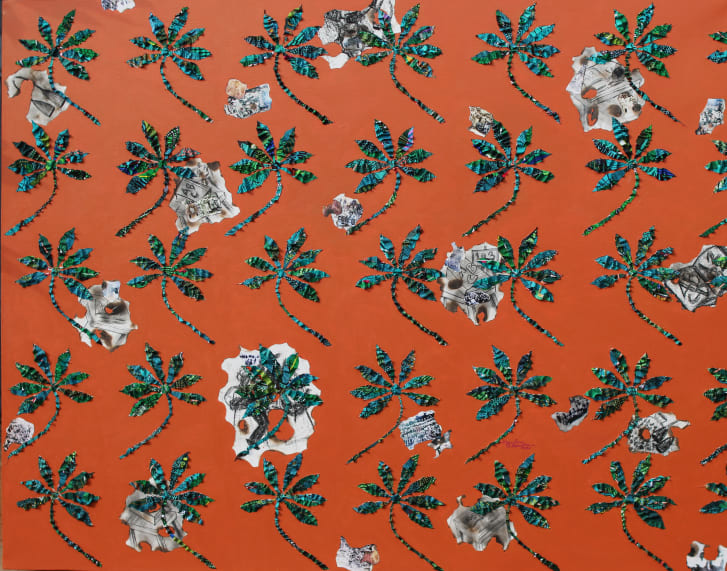
Akpojotor Advocates For Girls’ Education in Nigeria
Written by Rochelle Beighton, CNN
Only 10 countries in the world have a bigger gender gap than Nigeria when it comes to education, with around 70% of boys in the country attending primary school, compared to only 58% of girls.
It’s just one of the issues that Nigerian artist Marcellina Akpojotor addresses in her work.
She has exhibited around the world and gained international recognition for her family portraits that combine acrylics with scraps of Ankara fabric. But behind their dynamic patterns, Akpojotor’s works tell a deeper story of family, femininity and female empowerment in contemporary African society.
“If she could be born again, she would ask to be educated”
Akpojotor, 33, presented a body of work at last year’s Art Basel in Miami entitled “Ode to Beautiful Memories,” which pays homage to her community in Lagos. Featuring eight pieces, the collection tells the story of her female family members across five generations, starting with her late great-grandmother Dede Eboheide Anare and ending with her six-year-old daughter.

Akpojotor’s great-grandmother was a farmer who harvested cassava to sell at markets. Aspects of her life have been incorporated into Akpojotor’s work, which traces education from her great-grandmother’s era, when girls seldom went to school in Nigeria, until today.
“The work is taken from the stories my mother told me of her,” Akpojotor said, explaining that these pieces use the red-brown color of the earth typical of the region her family came from.Believing strongly that education is a source of empowerment for girls, Akpojotor wants her great-grandmother’s story to spark conversations around female education in Nigeria.”If she could be born again, she would ask to be educated, to read and write,” said Akpojotor. “There are schools everywhere you go now in Nigeria, but there are still some regions where female education is low.”
About 18.5 million children in Nigeria, mostly girls, do not have access to education, according to a UNICEF official. The UN children’s agency also estimates that less than half of all girls attend school in Northern Nigeria, because of factors including “economic barriers and socio-cultural norms and practices that discourage attendance in formal education, especially for girls.””Dialogue can be a tool for social change,” Akpojotor said. “It’s one tested way to get empowerment because when you are enlightened, you do more in society.”
Born and raised in Lagos, Akpojotor discovered her love for art while helping her sign-writer father with sketching, drawing and calligraphy projects. Like him, Akpojotor went on to study art and industrial design at Lagos State Polytechnic, where she began to formulate her signature abstract style.Inspired by the people around her, Akpojotor started collecting old photographs from her family archive and sketching out relatives to reflect their life experiences. Exploring the legacy left by previous generations has become one of the central themes in her work and featured in earlier exhibitions such as “She Was Not Dreaming” and “Daughters of Esan.”
More than a material to Akpojotor
Akpojotor has also become known for her use of Ankara fabric in her abstract portraits, exploring the material’s history and significance to women across Africa today.Featuring vibrant, colorful patterns, it’s found in homes and shops across West Africa. Outside of the continent the material is often thought of as quintessentially African, but its history is more complex.
Ankara textiles were only introduced to Africa by Dutch entrepreneurs in the 19th century, made using a method derived from a traditional Indonesian wax-resist dyeing technique called batik.”It was embraced by Africa but not originally made for the Africans,” said Akpojotor. She added that it became popular because it was mass-produced and affordable, and by incorporating the material into her art, she is making it more accessible.

As part of her creative process, Akpojotor travels around Lagos, collecting scraps of Ankara fabric from local fashion houses. She says this adds an extra story to her pieces as each fabric has its own journey and origin before reaching her hands.
“I borrow things from my background and incorporate them into my work,” she said, “and I think it makes it uniquely mine.”
Akpojotor says Ankara fabric, themes of female empowerment, and social issues will continue to be incorporated into her work as she hopes to engage audiences further with tales of ancestry and memory.
“I want people to be inspired to look at their lives and the lives of other people around them,” she said.







